Hurricane Melissa: What we know about the powerful storm in Cuba that ‘ravaged’ Jamaica

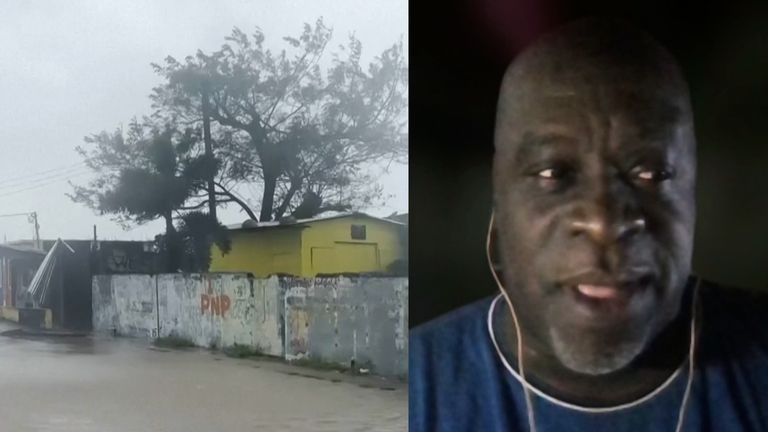
Hurricane Melissa, the most powerful hurricane of the year so far, has hit Cuba after ripping through Jamaica.
The Category 5 hurricane, which has now been downgraded, has left a trail of destruction in Jamaica, with prime minister Andrew Holness saying it “ravaged” the country.
It reached wind speeds of 185mph on Tuesday, making it the worst storm to hit the Caribbean country since records began 174 years ago.
At least 25 people have died in the southern Haitian coastal town of Petit-Goâve after the La Digue river burst its banks as a result of the hurricane, according to the town’s mayor Jean Bertrand Subreme.
Officials have said the storm is responsible for at least seven other deaths in the Caribbean, including three in Jamaica, three in Haiti and one in the Dominican Republic, where another person remains missing.
The three deaths in Jamaica happened during preparations for the storm’s arrival as people were cutting trees, health minister Christopher Tufton said.
Desmond McKenzie, Jamaica’s local government minister, says it’s too early to report on fatalities caused after Melissa struck.
Here’s what we know so far.
How badly was Jamaica hit?
The government formally declared Jamaica a disaster area as the storm struck, saying more than 530,000 were without power and almost every parish had reported blocked roads, fallen trees and major flooding.
Floodwaters trapped at least three families in their homes in the community of Black River in western Jamaica, and crews were unable to help them because of dangerous conditions, according to Mr McKenzie.
Please use Chrome browser for a more accessible video player
0:47
Hurricane Melissa was ‘traumatising’
“Roofs were flying off,” he said. “We are hoping and praying that the situation will ease so that some attempt can be made to get to those persons.”
He said the southwestern parish of St. Elizabeth “is underwater” and had suffered extensive damage.
Four main hospitals along the coast were damaged and one lost power, forcing officials to evacuate 75 patients, he added.
As of Wednesday afternoon, 77% of the country remained without electricity, according to government officials.
The extent of the damage across the country is not fully known, but aid group the Red Cross said early indications are that Hurricane Melissa has been a “disaster of unprecedented catastrophe”.
“News is already coming through that whole communities are underwater and that the damage left by the strong winds has been devastating,” said Alexander Pendry, British Red Cross global response manager.
“Tragically, experience tells us that the impact on communities and individuals will be shattering and long lasting.”
Before the hurricane made landfall, the Red Cross said it was preparing for just over half of Jamaica’s population, about 2.8 million people, to be directly affected.
Live updates as hurricane rips through Cuba
The prime minister had warned there was “no infrastructure in the region that can withstand a Category 5”.
Addressing Jamaicans in a statement on X on Wednesday morning, Mr Holness vowed to rebuild “even better than before”.
Please use Chrome browser for a more accessible video player
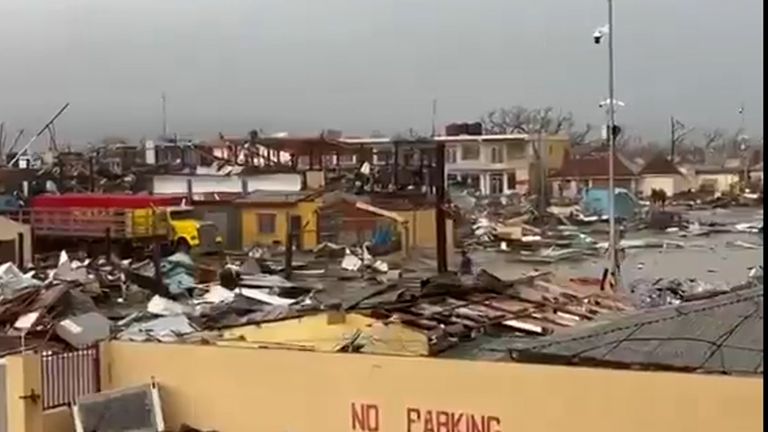
0:36
See ‘major impact’ from hurricane
“I know many, especially those in the worst-affected parishes, are feeling disheartened,” he said.
“Your homes may have been damaged or destroyed and your communities and towns no longer look the same.
“I know your pain and I feel your loss. We are mobilising quickly to start the relief and recovery efforts and we will be there with you every step of the way.”
The government hoped to reopen airports as early as Thursday to allow aid into the country from UN agencies and dozens of non-profits.
Please use Chrome browser for a more accessible video player
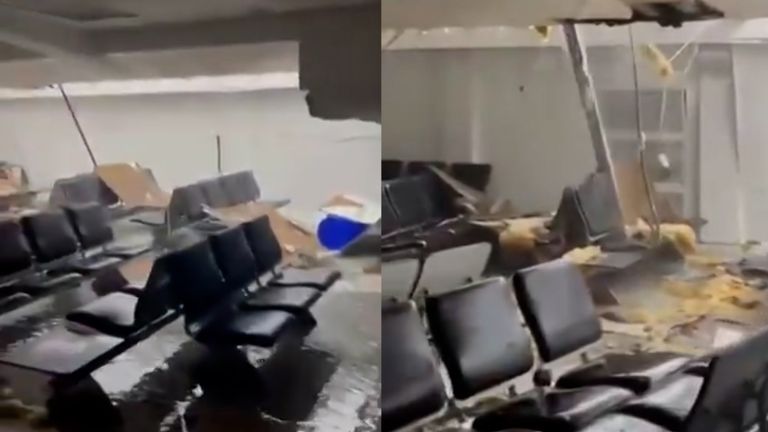
0:51
Hurricane wreaks havoc on Jamaican airport
It had issued mandatory evacuation orders before the storm hit for at least seven areas in the southeast that were designated as high risk, but reported that many residents decided to remain in their homes.
How bad could it get in Cuba?
Life-threatening and potentially catastrophic flash flooding with numerous landslides are possible, according to the US National Hurricane Center.
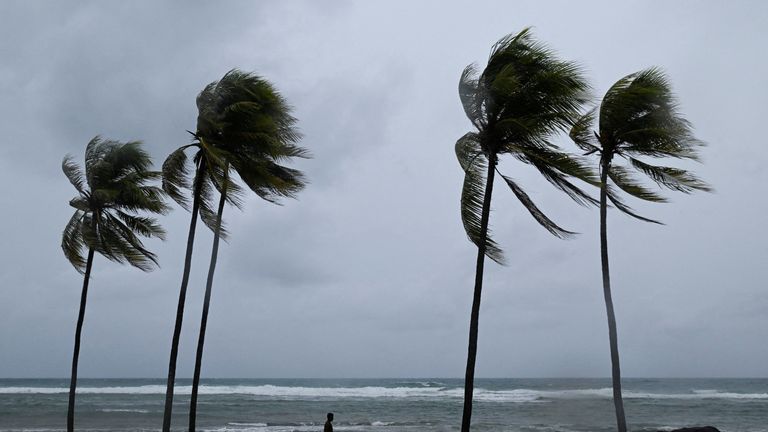
While it was downgraded before reaching Cuba in the early hours of Wednesday, forecasters said it “restrengthened” shortly before landfall, with wind speeds of up to 125mph as it approached.
Read more:
What is the difference between a cyclone, typhoon and hurricane?
Rainfall of up to 50cm (20in) was expected, rising to 63cm (25in) over mountainous terrain, while a storm surge could reach 2.4m to 3.6m (8ft to 12ft) above normal tide levels along the southeast Cuban coast, accompanied by “large and destructive waves,” according to the US centre.
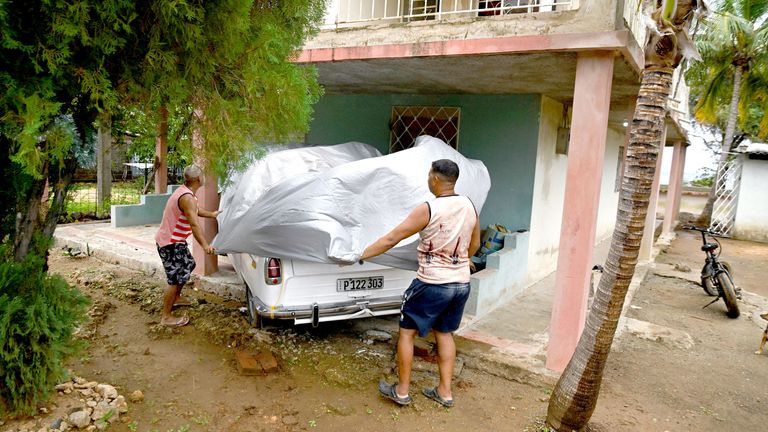
More than 735,000 people have been evacuated to shelters and a hurricane warning is in effect for the provinces of Granma, Santiago de Cuba, Guantanamo, Holguin and Las Tunas.
“There will be a lot of work to do. We know there will be a lot of damage,” Cuba’s president Miguel Díaz-Canel said in a televised address, pledging that “no one is left behind and no resources are spared to protect the lives of the population”.
He urged the public not to underestimate the power of Melissa, “the strongest ever to hit national territory”.
Melissa was categorised as the strongest type of hurricane on the Saffir-Simpson Hurricane Wind Scale as it ripped through Jamaica.
This scale rates maximum sustained wind speeds from one to five based on potential property damage.
By the time it reached Cuba it had been demoted to Category 3, but the scale does not take into account related dangers like storm surge, rainfall flooding and tornadoes.
All hurricanes produce life-threatening winds, but hurricanes rated Category 3 and higher are deemed major hurricanes.
• Category 1: 74-95mph. Very dangerous winds will produce some damage
• Category 2: 96-110mph. Extremely dangerous winds will cause extensive damage
• Category 3: 111mph-129mph: Devastating damage will occur
• Category 4: 130mph-156mph: Catastrophic damage will occur
• Category 5: 157mph+ Catastrophic damage will occur
Why is the storm named Melissa?

Since 1953, Atlantic tropical storms have been named by the US National Hurricane Center and then the World Meteorological Organisation.
Six lists of names are used in rotation and recycled every six years.
Should three more storms occur after Melissa, their names will be Nestor, Olga and Pablo.
The only time there is a change to the list is if a storm is so catastrophic that to use its name for another storm would be insensitive.
For example, the name Katrina was retired by the World Meteorological Organisation due to the 2005 storm’s devastating impact – it was replaced with the name Katia.
The use of easily remembered names reduces confusion when two or more tropical storms occur at the same time.
